What is Solo Leveling
“Solo Leveling” is a South Korean web novel series written by Chu-Gong. It was later adapted into a webtoon (online comic) with illustrations by Jang Sung-rak. The story follows Sung Jin Woo, an E-rank hunter, who is considered the weakest of the weakest in a world where people known as “hunters” combat monsters. However, during a raid, Jin Woo finds himself trapped in a dungeon, where he discovers a mysterious system that allows him to level up and become stronger.
As Sung Jin Woo progresses through various dungeons and battles, he gains unique abilities and powers, transforming from the weakest hunter to one of the strongest. The series is known for its captivating storyline, intense action sequences, and well-developed characters. It has gained widespread popularity for its exceptional art, engaging plot, and the protagonist’s journey of growth and strength.
“Solo Leveling” has become a sensation in the world of webtoons and has garnered a large fanbase both in South Korea and internationally.
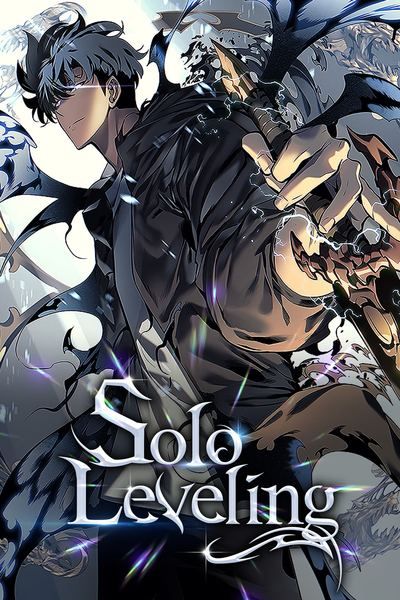
Art of Solo Leveling : From Sketches to Masterpiece
Solo leveling art style is a unique art style that originated in korea for digital art. Solo leveling is drawn by two artist Jang Sung rak and Gee So Lyung who work under the pseudonym Rsdice Studio.
Solo leveling uses a style of concept art that is detailed and dynamic illustrations, with creating visually impactful scenes. The series employs a consistent and high-quality standard of artwork, ensuring a visually engaging experience for readers. The backgrounds are carefully crafted, contributing to the overall immersive storytelling. In essence, Solo Leveling’s art style is characterized by its attention to detail, dynamic compositions, and a commitment to delivering a visually impressive narrative.
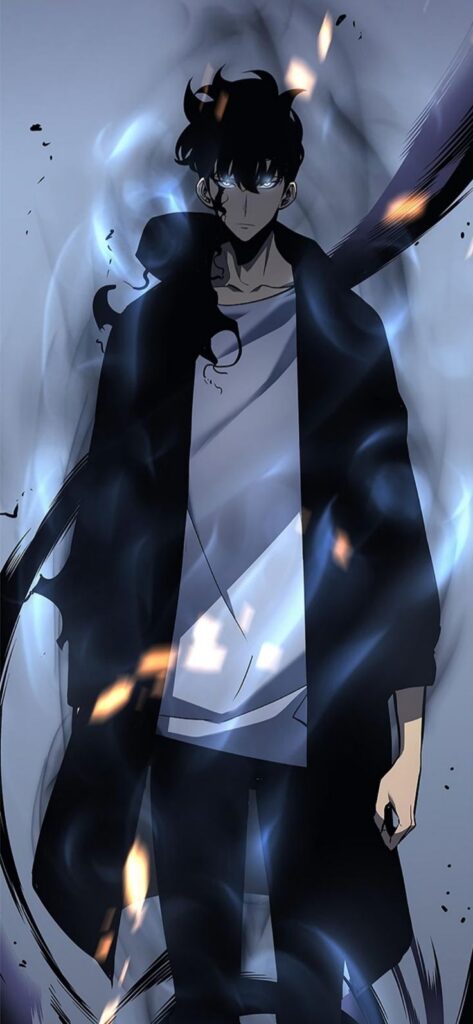
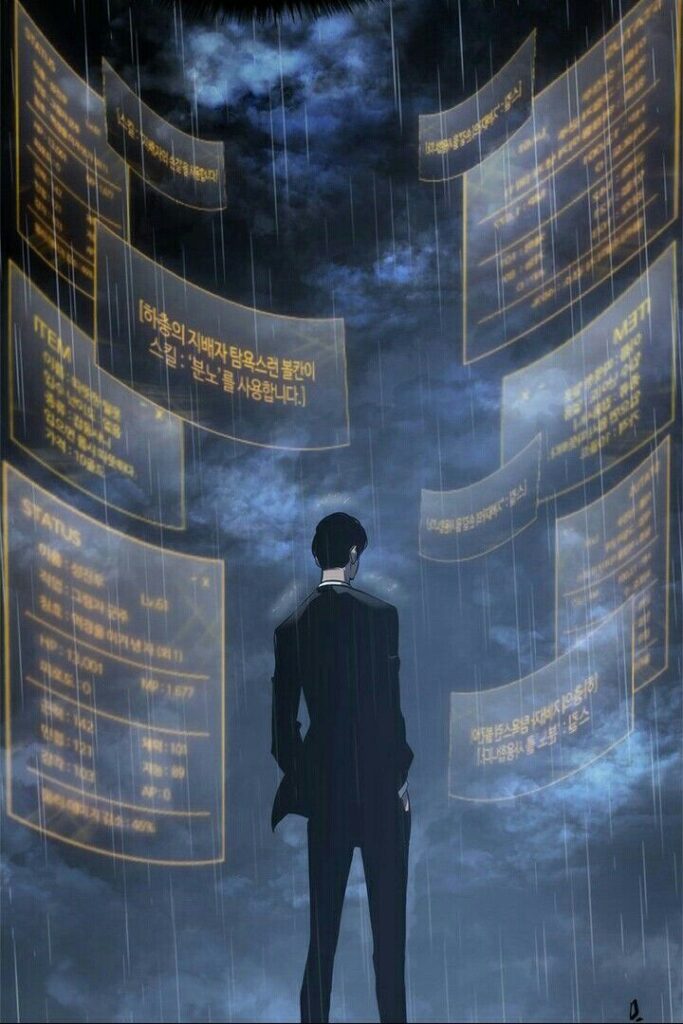
Anime vs manga
Anime and manhwa are distinct art styles rooted in different cultural traditions. Originating from Japan, anime is characterized by its colorful visuals, exaggerated facial expressions, and diverse character designs. It encompasses a wide range of genres and themes, reflecting the diversity of Japanese storytelling traditions. Anime is primarily animated, presenting scenes and transitions through dynamic animation sequences.
On the other hand, manhwa is a term used for South Korean comics or graphic novels. The artistic characteristics of manhwa often lean towards a more realistic depiction of characters, featuring diverse facial features and body proportions. The art style may incorporate influences from both Western and Eastern traditions, resulting in a unique visual identity. Manhwa is presented in traditional comic book or manga formats with sequential panels, and its themes may often reflect aspects of South Korean culture and society.
While anime is part of a well-established Japanese animation industry, manhwa has been gaining international popularity, especially through webtoon platforms. Both mediums are dynamic forms of visual storytelling, each with its own cultural context, artistic nuances, and global impact.
Line Art
Solo Leveling’s line work is a masterpiece, exhibiting a remarkable blend of precision, cleanliness, and detail. The beauty of the lines is not merely functional but elevates character design to an art form, pleasing to the eyes with its aesthetic finesse. During intense battle sequences, the line work becomes a powerful narrative tool, capturing the essence of swift and beastly movements. It doesn’t merely outline the characters; it breathes life into them, conveying emotions and telling a story through each stroke. The artistry in the line work is a testament to the creative prowess of the artist, transforming the visual experience into a captivating journey where every line contributes to the overall brilliance of Solo Leveling’s storytelling.
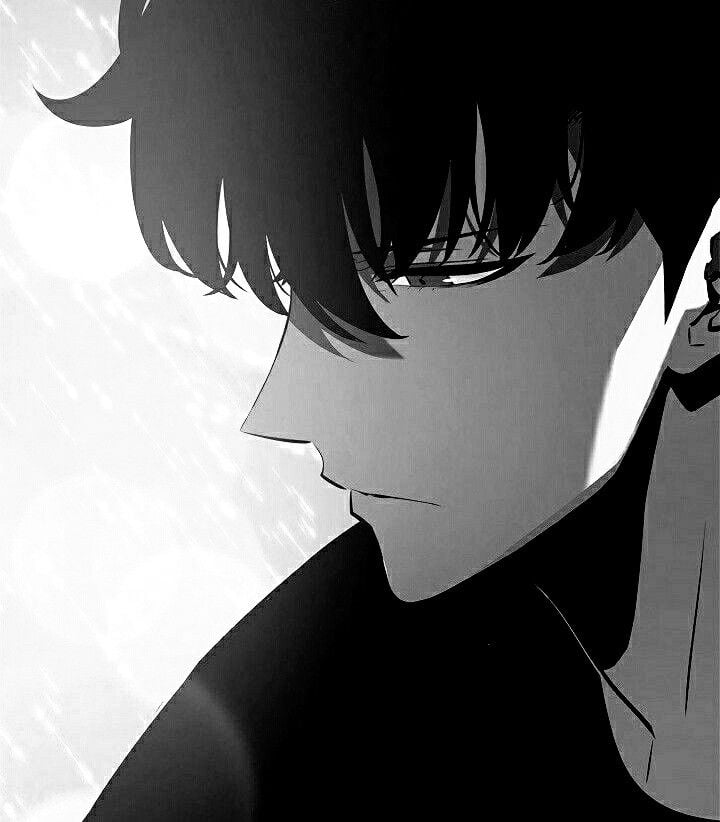
Shading
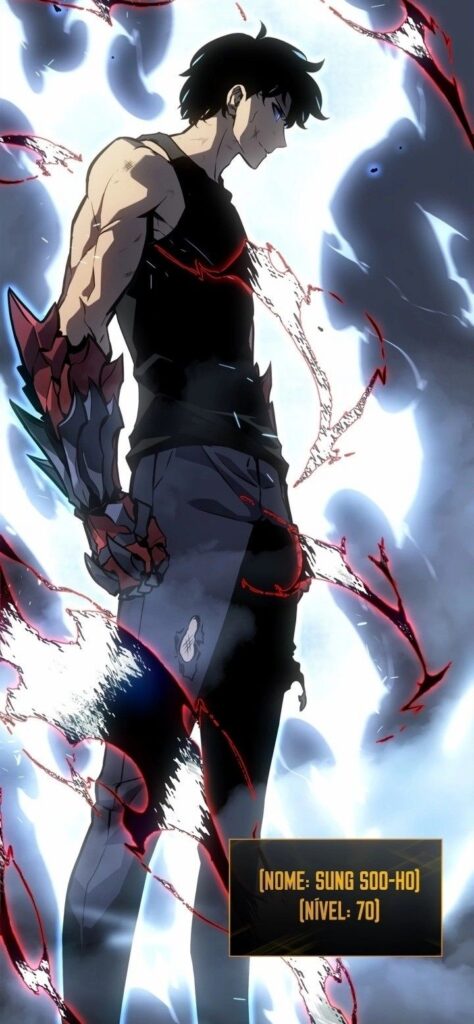
Solo Leveling boasts a distinctive shading style that goes beyond mere illustration, effectively conveying the scene’s atmosphere and nuanced emotions. The shading technique is an artistic marvel, adding depth to the visuals and enriching the overall storytelling experience. It doesn’t merely highlight characters and settings; it becomes a narrative element in itself. Particularly notable is its ability to capture and express character emotions, providing a nuanced and immersive dimension to the story. The shading in Solo Leveling is not just a visual embellishment; it’s a storytelling tool that enhances the narrative, making the series a visually compelling and emotionally resonant journey.
Background
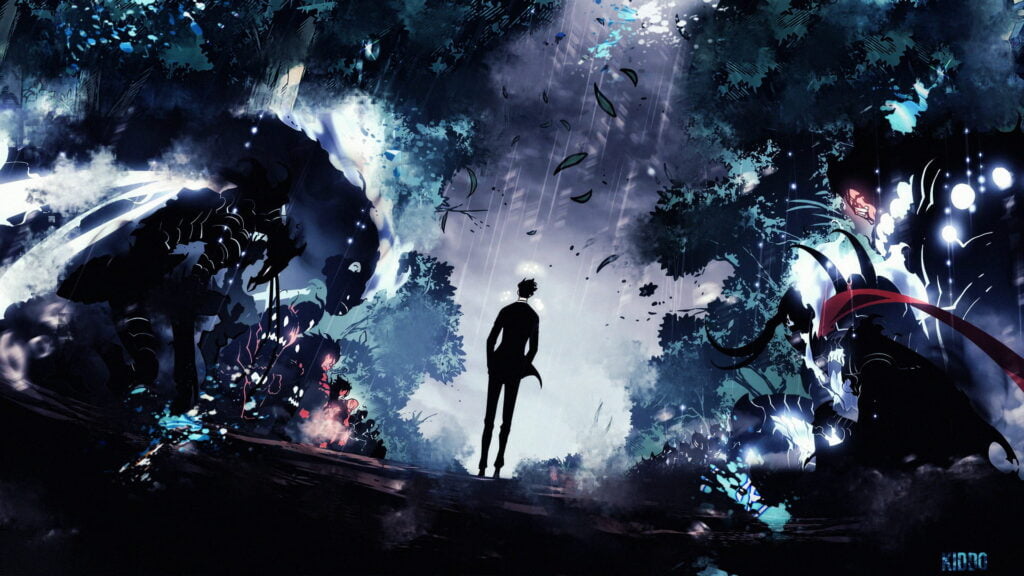
In solo leveling background.The attention to detail in rendering environments, whether they be urban landscapes, dungeons, or fantasy realms, is a testament to the artist’s dedication. Each background is a visual feast, complementing the narrative by setting the tone and providing context to the unfolding events. From towering skyscrapers to mystical landscapes, the backgrounds are not merely static scenes but dynamic components that evolve alongside the storyline. The artistic prowess displayed in the background illustrations enhances the overall aesthetic appeal of Solo Leveling, creating a visual tapestry that captivates readers and transports them into the intricately designed world of the series.
The Dark Gritty World of Hunters Fighting the Bright Magical Best
Lighting
In the realm of Solo Leveling’s artistry, the play of lighting and shadows transcends mere illumination, becoming a distinctive hallmark of the series. The unique color contrast employed in Solo Leveling’s lighting is a visual feast, skillfully manipulating hues to create a dynamic and immersive atmosphere. What sets it apart is the strategic use of complementary colors in shadows and lighting, a deliberate choice that elevates the visuals to new heights. This technique not only adds a layer of sophistication to the artwork but also serves as a powerful storytelling device, guiding the viewer’s focus and emphasizing key elements within the scenes. Whether it’s the eerie glow of a dungeon or the intense radiance during a climactic battle, Solo Leveling’ s adept use of color contrast in lighting stands out, making each panel a captivating exploration of visual dynamics and narrative nuance

Magic Effects
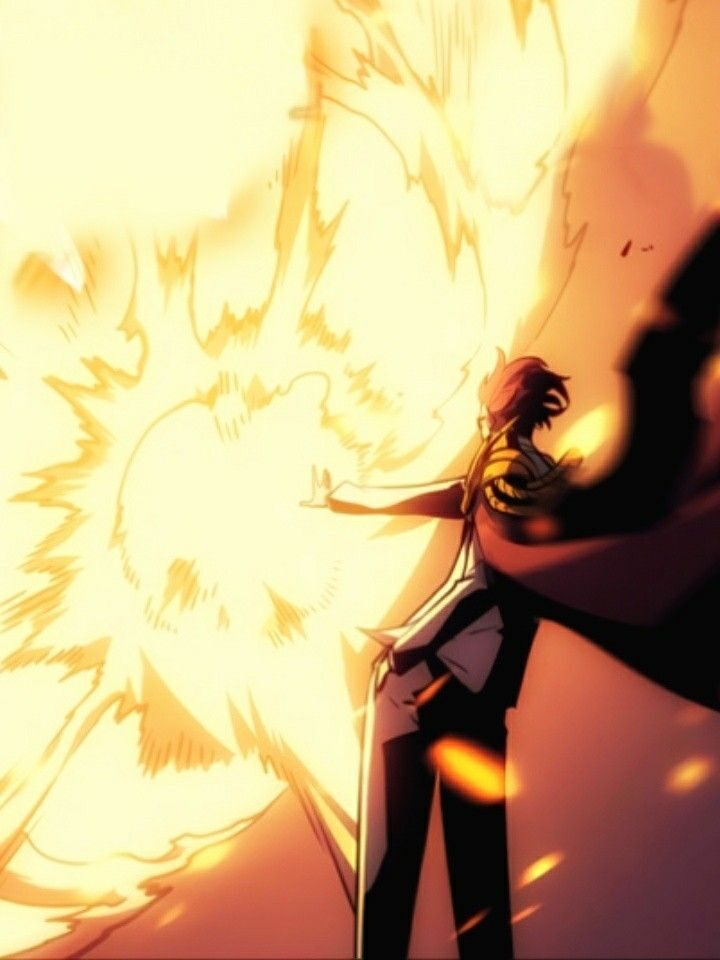
In Solo Leveling, the magic effects are a visual spectacle that enhances the series’ fantastical elements. The depiction of magical abilities and supernatural powers is a testament to the artist’s creativity and skill. Each magic effect is rendered with meticulous detail, from ethereal glows to intricate patterns, creating a visual language that immerses readers in the mystical world of the story. The magic effects serve not only as eye-catching embellishments but also as narrative cues, providing a dynamic representation of the characters’ extraordinary abilities. Whether it’s arcane symbols accompanying a spell or the vibrant burst of energy in a magical clash, these effects are integral to conveying the intensity and otherworldly nature of the supernatural elements within Solo Leveling. The artistry displayed in the magic effects contributes to the overall allure of the series, making it a visually enchanting journey into a realm where magic and reality seamlessly intertwine.
A Perspective Magical Flow
Webtoon in korea usually drawn in full color and have a vertical scroll layout. The artist behind the seris use this as there advantage and make amazing manga panels
Perspective
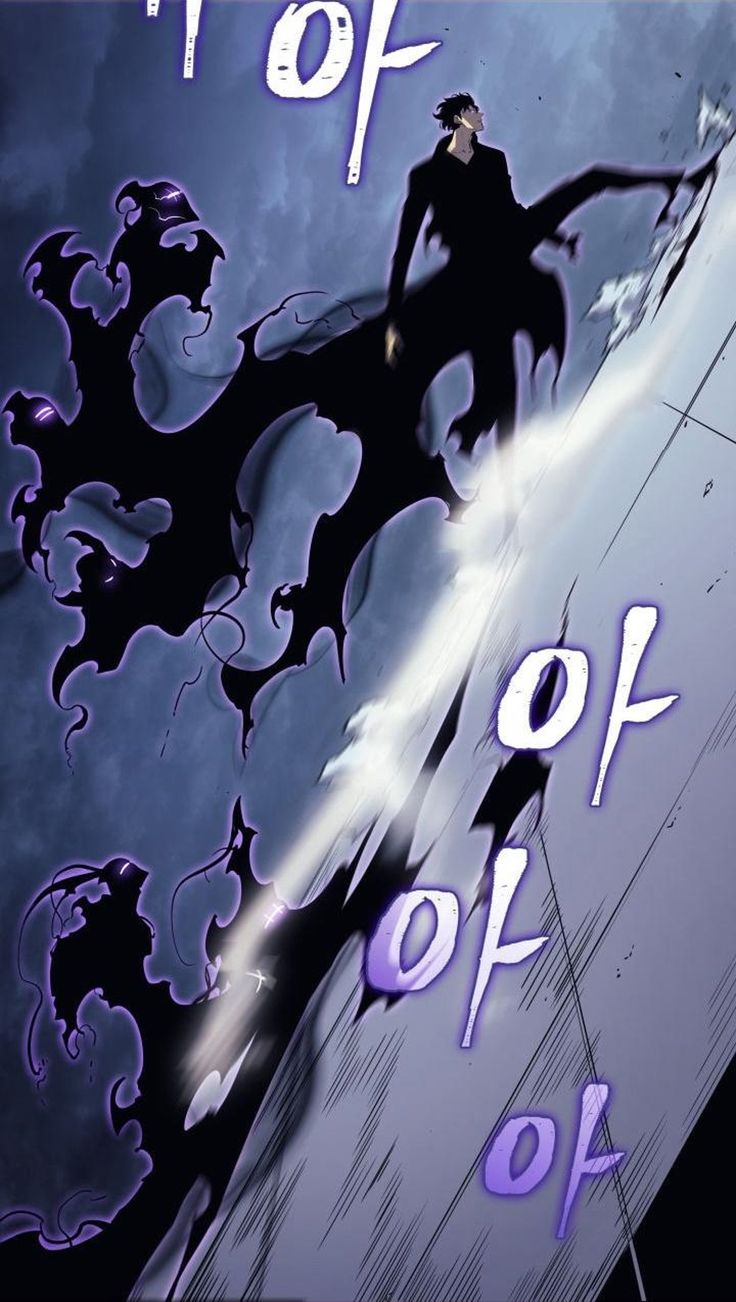
The artist skillfully employs a variety of perspectives and angles in Solo Leveling, strategically using one-point, two-point, and three-point perspective to convey the scale and positioning of objects and characters within the narrative. This dynamic approach creates a sense of movement and depth, enhancing the overall visual experience. Additionally, the strategic use of low-angle, high-angle, and bird’s-eye view shots adds a layer of storytelling nuance. In action-packed sequences, low-angle shots emphasize Sung Jin woo’s strength and confidence, showcasing his dominance, while high-angle shots effectively highlight the vulnerability and fear of his adversaries. This deliberate use of perspective contributes to the series’ visual dynamism, providing readers with a nuanced and immersive portrayal of characters and their interactions
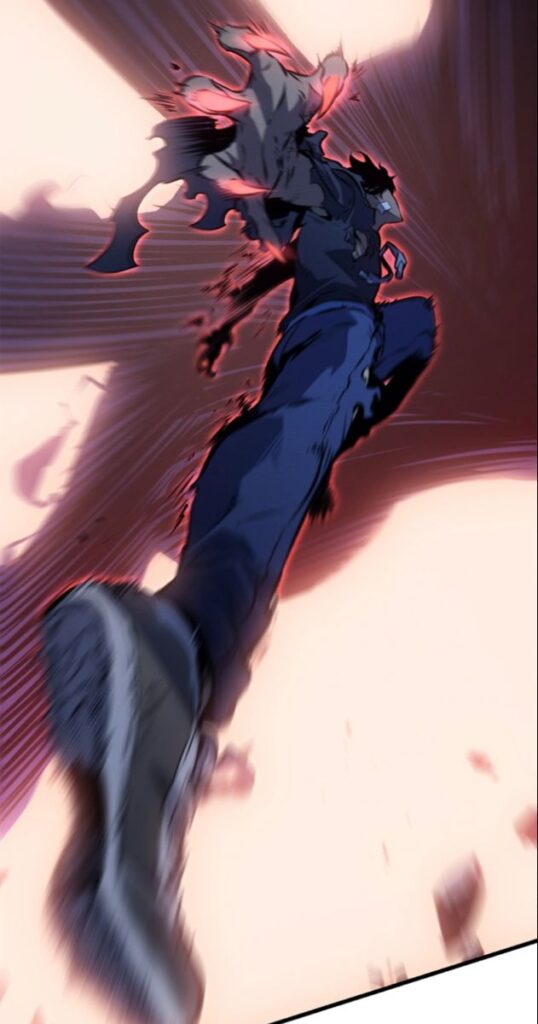
Flow
The panels in Solo Leveling exhibit a seamless flow that mimics the fluidity of animation, creating a dynamic and engaging reading experience. The artist’s meticulous attention to panel transitions and pacing contributes to this animated sensation. Each panel smoothly transitions to the next, capturing the sense of motion and progression akin to frames in an animated sequence. Whether in intense battle scenes or quieter moments of character development, the visual storytelling maintains a rhythmic flow that draws readers into the narrative. The strategic use of varying panel sizes and layouts further enhances the dynamic feel, allowing for a natural progression of events and emotions. This animated-like flow in the panels not only complements the action sequences but also adds a cinematic quality to the overall storytelling in Solo Leveling.
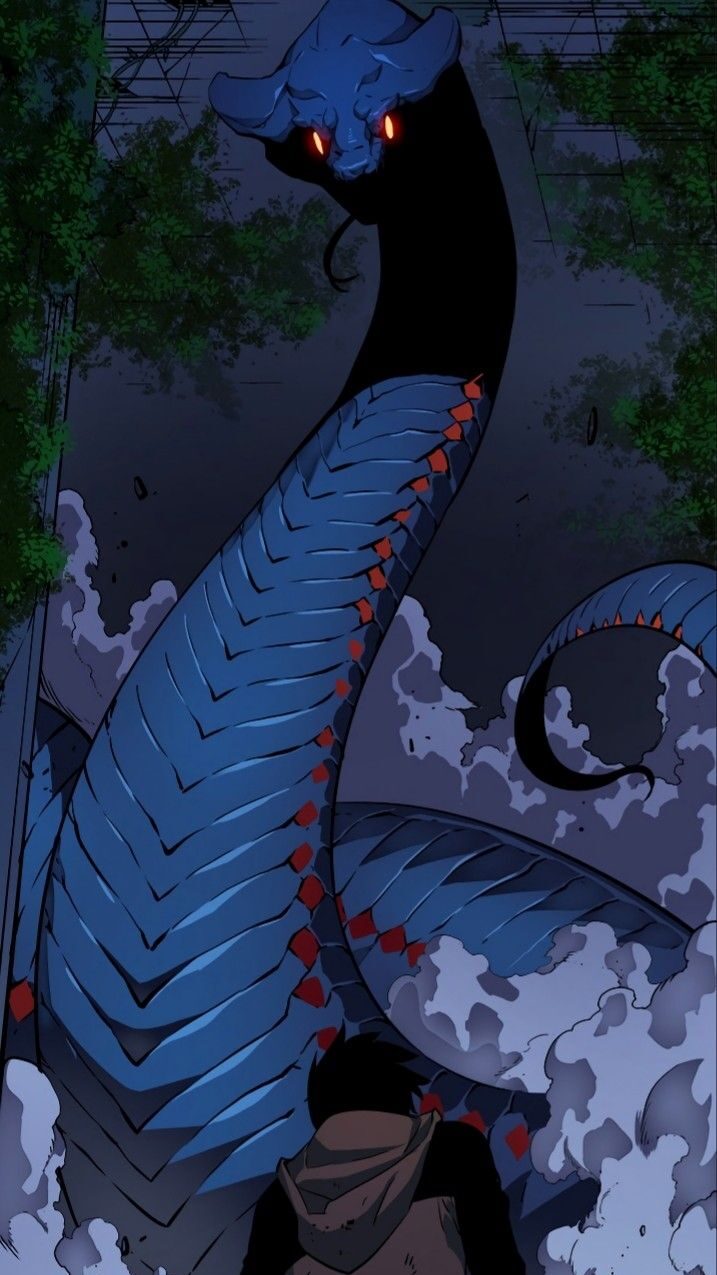
The Secret behind the Character Design of Solo Leveling
Character design
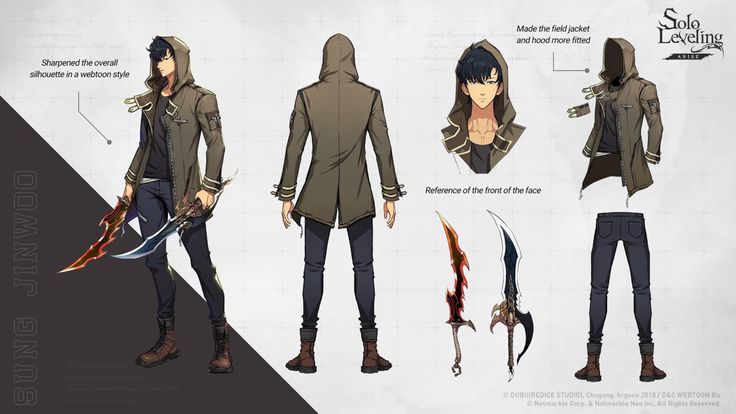
Solo Leveling boasts character designs that are not only distinctive but also possess unique qualities that set them apart from other works. The careful crafting of characters allows readers to discern their strength and ideals through visual cues, showcasing the artist’s prowess in conveying narrative elements through design. Each character is thoughtfully illustrated, with physical attributes and expressions that speak volumes about their personalities and roles within the story.
Color Pallet
One notable aspect of Solo Leveling’s character design is the adept use of a compelling color palette, predominantly featuring yellow and blue hues. This deliberate choice in color scheme adds a layer of visual sophistication, contributing to the overall aesthetic coherence of the series. The colors aren’t just ornamental; they play a crucial role in conveying emotions, emphasizing power dynamics, and enhancing the thematic elements within the narrative. This meticulous attention to character design, combined with a thoughtfully chosen color palette, elevates Solo Leveling’ s visual storytelling, making it a standout in the realm of webtoon.
Body language
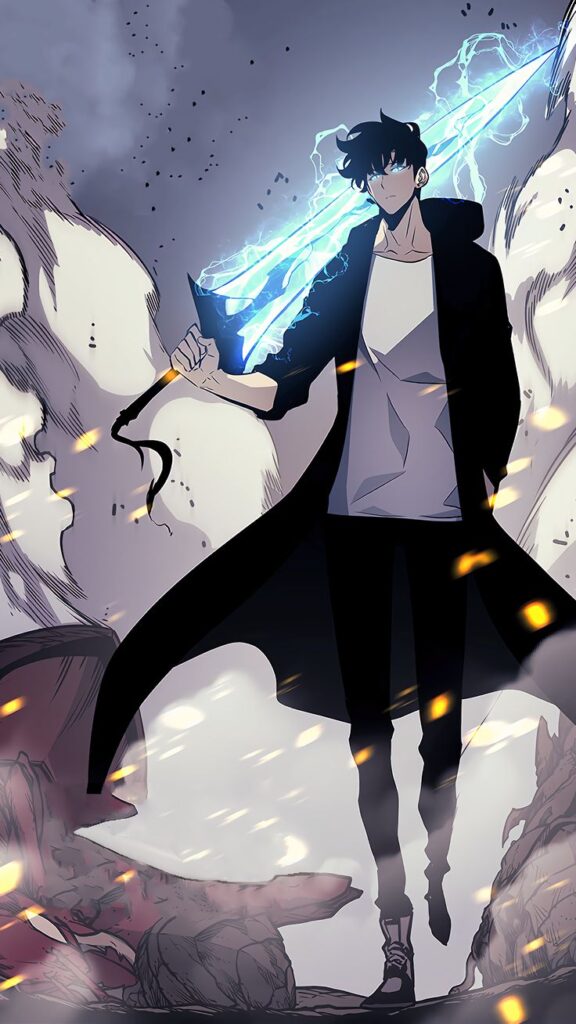
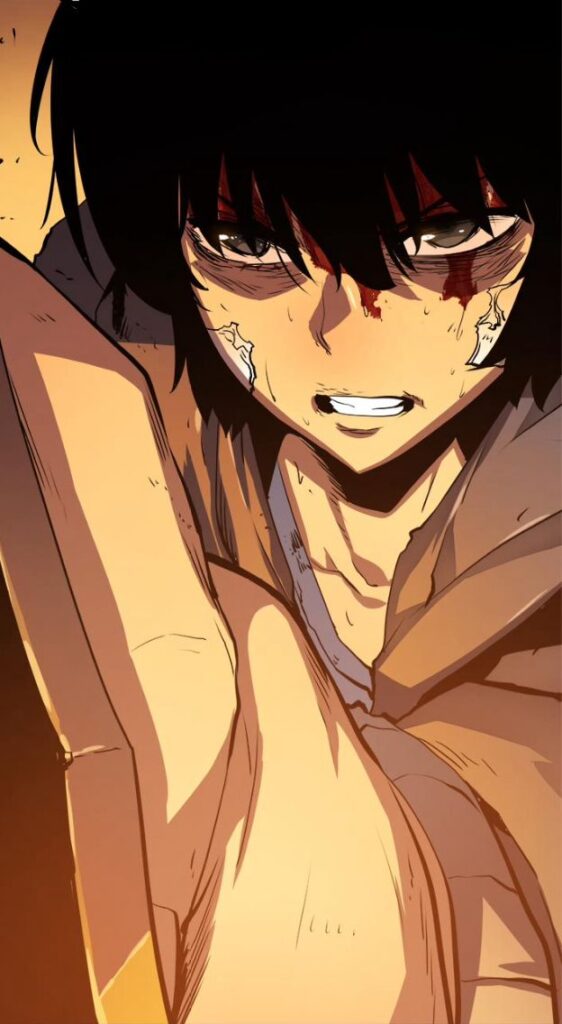
Solo Leveling masterfully utilizes body language as a powerful storytelling tool, providing visual cues to convey character growth and power dynamics. In the midst of battles, the protagonist, Sung Jin Woo, exhibits a commanding and regal posture, symbolizing his ascent to true kingship. The deliberate depiction of his confident and authoritative stance speaks volumes about his evolving strength and indomitable spirit. Conversely, the body language of other characters, particularly those near defeat, reflects their struggle and impending peril.
The subtleties of body language in Solo Leveling extend beyond mere physical posture, capturing the essence of characters’ internal transformations and the shifting dynamics of power. Sung Jin Woo’s commanding presence amidst chaos serves not only as a testament to his newfound strength but also as a visual metaphor for his ascendancy to a position of dominance.
This nuanced use of body language in Solo Leveling enriches the narrative, allowing readers to witness the characters’ growth and the ebb and flow of power through visual storytelling. It’s a testament to the artist’s ability to convey the complex emotions and power dynamics within the series, making the characters’ journeys palpable and engaging.
Solo Leveling : A True Piece of Art
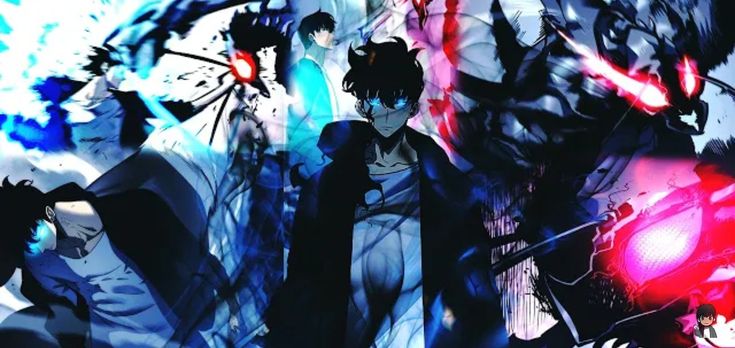
Solo Leveling stands out among other manhwa or manga for several reasons, particularly due to its effective storytelling and narrative techniques. One key aspect is its commitment to a well-paced and straightforward plot. Unlike some series that may become convoluted or overly complex, Solo Leveling maintains a clear and concise narrative, making it accessible and easy for readers to follow.
The series excels in gradual world-building, introducing elements at a manageable pace that allows readers to acclimate to the story’s universe. This deliberate approach ensures that readers are well-prepared for significant shifts in the narrative, preventing confusion and enhancing the overall reading experience.
Furthermore, Solo Leveling’s character development is a standout feature. The progression of characters feels organic and purposeful. Readers witness a gradual evolution in the protagonist, Sung Jin Woo, and other key characters, making their growth more impactful and believable. The series excels at weaving character development into the broader plot, creating a cohesive and engaging narrative.
In summary, Solo Leveling distinguishes itself by maintaining a straightforward yet compelling plot, employing effective world-building techniques, and crafting authentic character development. These elements contribute to its widespread appeal and success among readers in the crowded landscape of manhwa and manga.




